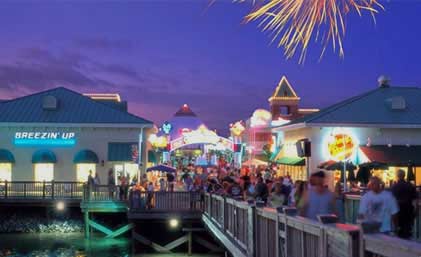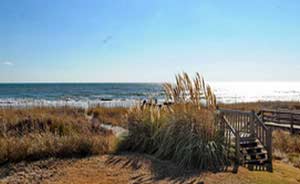Getting Here and Navigating the Strand
The popularity of the communities that comprise the Grand Strand – from the fishing village of Little River on the state’s northern edge to the historic port city of Georgetown on the Strand’s southernmost point – continues to climb. The numbers are approximate, of course, but it’s estimated that some fifteen million people visit the area every year. And that number shows no sign of slowing its upward climb. One reason is this area is so conveniently located (midway between the Northeast and sunny Florida) and easily accessible by plane, train and automobile. Train service is available from Charleston or Florence. You can fly into the Myrtle Beach International Airport. Most notably, though, the area is best known as what tourism professionals call a “drive market.” Believe it or not, most cities east of the Mississippi are within only one day’s drive!
The Strand boasts a strong web of roadways – and plans are on the drawing board for even more modern thoroughfares. A proposed Interstate 73 corridor would create a direct route for visitors to the Grand Strand from states throughout the upper Midwest and Northeast.
BY AIR
Myrtle Beach is among the nation’s fastest growing communities. It’s no surprise then that Myrtle Beach International Airport is experiencing tremendous growth. More than 800,000 people are forecast to fly in and out of Myrtle Beach on ten-plus airlines. The airport serves travelers across the country with service to destinations that include Atlanta, New York, Chicago, Philadelphia, Washington and more. For a list of non-stop destinations, carriers and other information, visit FlyMyrtleBeach.com. The Myrtle Beach International Airport also offers service for private companies.
ROADS
Within the last decade, new roads have been created to ease congestion caused by the growing influx of visitors – and residents. Once you’ve arrived, you won’t need to fret much about reaching your destination because the Grand Strand's new network of roads makes traveling throughout the Myrtle Beach area much less a hassle than it once was
The 28-mile Veterans Highway (SC 22) is a four-lane road that links US 501 west of Conway and US 17 north of Myrtle Beach. The Carolina Bays Parkway (SC 31) runs from SC 9 to US 544; eventually it will extend to US 17 south of Myrtle Beach.
Harrelson Boulevard, a new access road to Myrtle Beach International Airport from US 17 Bypass, joins other completed road projects including the oh-so-popular Robert M. Grissom Parkway, which runs roughly parallel to US 17 Bypass and US 17 Business and provides a relatively uncrowded passage through central Myrtle Beach; the Robert M. Grissom Parkway is a four-lane route from 62nd Avenue North in Myrtle Beach to Harrelson Boulevard near the Myrtle Beach International Airport.
There have also been extensive improvements to US 501 and SC 544, both of which are major thoroughfares to central and south Myrtle Beach area.
Ocean Boulevard and Kings Highway (best known as Business 17) runs parallel to the Atlantic Ocean – north and south along the Grand Strand. Highway 17 Bypass, a busy section locals refer to as "the Bypass," is the Grand Strand's westernmost route running parallel to the ocean. When it opened originally, way back in the late 70s, it was a beltline of sorts around the Strand. (Now, Highway 31 and Highway 22 serve that purpose, too.)The Bypass begins in Murrells Inlet and extends north until it merges with Kings Highway just before Restaurant Row. Mile markers are located on Business and Bypass Highway 17 to make navigation easier.





